S’pore-based crypto exchange Hodlnaut halts withdrawals – pulls out MAS licence application
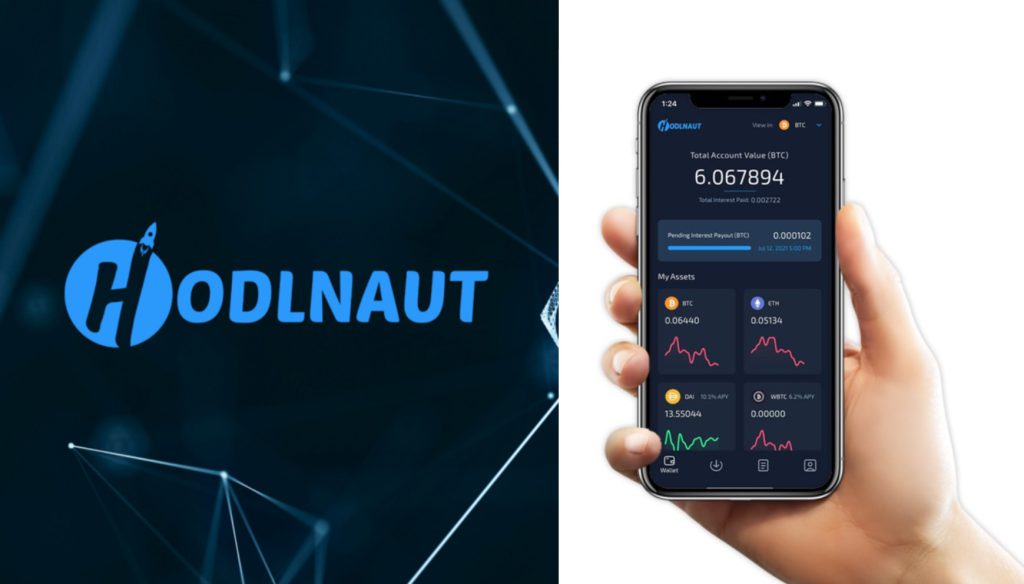
Hodlnaut announced today (August 8) that it has halted withdrawals, token swaps and deposits with immediate effect due to the recent challenging “market conditions”.
In a press release addressed to all its users, Hodlnaut acknowledged that this is “disappointing news” and apologised for the inconvenience that this has brought.
“We would like to reassure you that this difficult decision was taken for us to focus on stabilising our liquidity and preserving assets, while we work to find the best way to protect our users’ long-term interests,” said the company in the press release.
Hodlnaut has also informed the Monetary Authority of Singapore (MAS) to withdraw its licence application. It was previously granted an in-principle approval from the central bank in March 2022.
This means that it will no longer provide regulated digital payment token (DPT) services, ie. our token swap feature. For the avoidance of doubt, Hodlnaut will also cease all borrowing and lending services.
According to Hodlnaut, it is consulting Damodara Ong LLC to work on a feasible recovery plan that has the users’ best interests in mind, and hope to provide the next update on August 19.
“We are immensely grateful to all of our users, past or present, for your continued support over these three years. We wish that the situation was different, but we are determined to find the best possible outcome for our users and will keep our valued users informed every step of the way,” it added.
Featured Image Credit: Hodlnaut
Also Read: Revolut launches crypto trading in S’pore, exec shares more on its local crypto strategy
84 yrs after launch, this railway kopitiam in Kluang is laying down the tracks for expansion
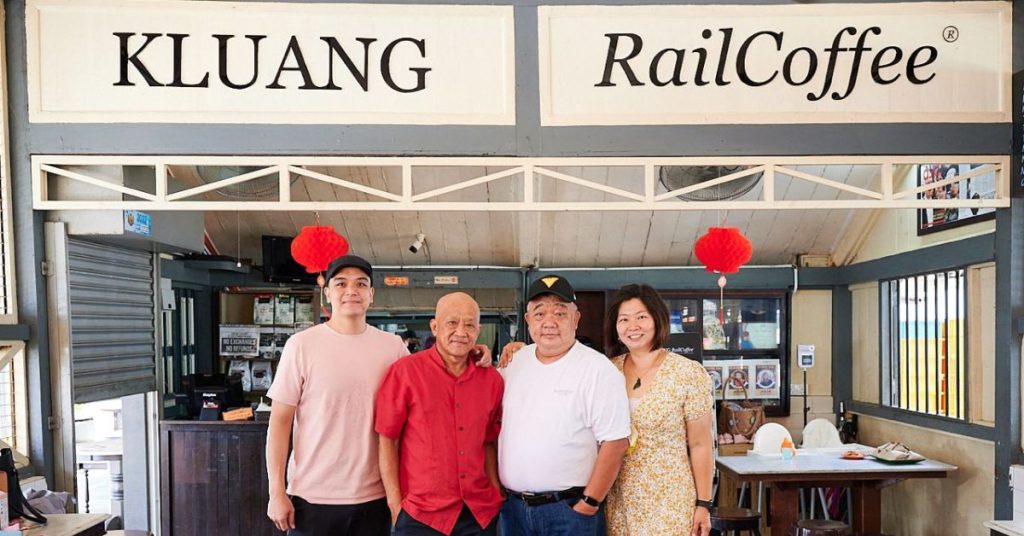
I know this, and you know this too: food is at the heart of our Malaysian culture.
We’re fiercely passionate and proud about dishes we feel originated from Malaysia, and it’s one of our biggest love languages, with “Have you eaten yet?” being a common greeting you’d hear.
Not to mention, we find ways to bond over our shared love for food, regardless of ethnicity, religion, social status, and more.
Kluang Rail Coffee is a kopitiam with an environment replicates this scenario. Founded in the early 1900s by Lim Luan Hee, the kopitiam has been serving customers for over five generations.
Kluang Rail Coffee opened its very first outlet (starting off as a canteen) at the Kluang railway station in 1938 in Jalan Stesen, Kluang, Johor. At the time, the railway formed the backbone of then Malaya’s transportation and communication network.
Built in 1909, the Kluang railway station was strategically located close to the police station, post office, telecoms office, hospital, and Government administrative offices.
This made the canteen extremely convenient and popular, especially since it began serving breakfast and the first cup of coffee from as early as 6.30AM.
Over time, the team shared that the canteen grew to become the very first kopitiam in the district of
Kluang, under Lim’s son Lim Heng Yong and later, his grandson Lim Jit Chen.
“This is something that we take great pride in and we will continue to cherish the old whilst embracing the new,” shared Ben Winn, Director of Kluang Rail Coffee.

Going old school
It’s been seven years since Ben first joined the family-owned business. He was 27 years old then.
Prior to hopping onboard Kluang Rail Coffee, Ben was part of the corporate world, specifically in the marketing and advertising industry.
“I can’t say definitively when or why I decided to take the leap from my corporate career to the family business. The kopitiam was always a part of my childhood and it somewhat felt like the right thing to do,” shared Ben.
It began when, one evening, while Ben and his friends were playing football, his father pulled up by them and got out of his car.
He approached the boys and recruited a few of them to “work”, just by pointing at them. They each duly reported for work and over the years, they all formed the best friendships right there at the kopitiam.
“My mother ran the floor and the cashier, and as most would know, my father was the barista,” recalled Ben.
Ben admitted that he was not always an eager helper and was often quick to come up with excuses to try to get out of duty at the coffee shop.

However, he expressed, “Looking back now, these are some of my most cherished moments, especially the time I got to spend with my folks. In many ways, it has also shaped me into the person I am today.”
Keeping things authentic
As we worked on this piece, there was a burning question on our mind: Was the Kluang Station kopitiam brand in any way affiliated with Kluang Rail Coffee? We’d mostly seen the former brand name around Klang Valley, and thus were more familiar with it.
Turns out, despite their similar names and to some extent, branding, they are completely separate entities. However, Ben admitted that this has definitely caused some confusion in the market.
“Though this may be true, we believe our customers will be able to identify with our originality and authenticity. Our brand and heritage is unique to us and we intend to stay true to this,” he added.
Based on light research, it also seems that Kluang Station only came into being circa 2005, after Kluang Rail Coffee had already been long established.

Over the past eight decades, Kluang Rail Coffee has kept its first and original location in a building at Kluang railway station.
And though it has made some changes to its menu, it still serves the classic coffee and toast with soft-boiled eggs.
Crediting their ability to continue doing what they’ve always done to the team behind the brand, Ben said, “I would also like to specifically mention the hardworking team that has worked very hard to maintain the highest standards.”
“They have ensured the food quality and have contributed in building relationships with our customers.”
A proud kopitiam
In being a brand loved by its community, the kopitiam has had a number of organisations approach them to offer many awards and recognition of sorts, Ben said. However, the team always declined the opportunity.
Until they stumbled across The Malaysia Book of Records, which he described as feeling like “the right recognition”.
“It celebrated our legacy, those who were a part of the journey such as our friends, family, team, business partners, and customers,” shared Ben.
At present, the kopitiam has four branches, all around the Kluang district. This was perhaps why we found ourselves more familiar with Kluang Station, which is focused on the Klang Valley and beyond.
Kluang Rail Coffee’s branches were launched in 2007, 2008, and 2010 respectively, and they’ve not made any other geographical expansion moves since then.

“As a small family business, I would say that there was never really a big plan for the startup in the beginning,” mentioned Ben.
He added that their growth thus far was organic, out of passion and dedication to the business and their family heritage.
Moving forward, Kluang Rail Coffee wants to continue sharing its heritage with more Malaysians as part of their expansion and growth plans for the kopitiam.
For this reason, the team feels that it’s time they expand their horizons beyond the borders of Kluang. Thus, they will be opening their first outpost in Shah Alam, Selangor very soon, with more new locations already on their mind.
They’re still remaining modest in their ambitions though, with Ben simply concluding, “We hope to be in more places, serve a more extensive menu, better our services, and put more smiles on faces as well as continue to create more memories with others.”
- Learn more about Kluang Rail Coffee here.
- Read other articles we’ve written about Malaysian startups here.
Also Read: Here’s a quick guide on how to get a RM50 voucher by subscribing to foodpanda’s pandapro
Featured Image Credit: Kluang Rail Coffee
A golden moment: M’sia sent 3 teams to the Commonwealth Esports Championships. All got gold.

The inaugural Commonwealth Esports Championships (CEC) have just taken place over the weekend on August 6 and 7.
Malaysia sent three squads to Birmingham to take part in it—one eFootball athlete and two Dota 2 teams (one for the open category and one, in the women’s category).
Malaysia all but dominated, placing first in all three categories in the first-ever CEC. Here are the Malaysians who are bringing home the gold and the glory.
He shoots, he scores
The victory was led by Mohamad Nor Haikal Mohamad Noh (Haikal). The eFootball athlete represented the Malaysian Super League champions, Johor Darul Ta’zim, in the game.

On August 6, Haikal beat out Gary McInnes, a Scottish player, in two out of three matches, thus securing his gold medal.
According to an article by What’s The Meta, Haikal has quite the list of accolades as an eFootball athlete. He was a 2018 Asian Games semi-finalist and was the first Malaysian player to play in the Thai League, Toyota E-League Pro 2019.
“I am so happy, this is my dream,” Haikal said in an article by Global Esports Federation. “I have been waiting for this for years. It means so much to the people back home, lots of people are watching online, and I can hear all the messages coming in for me already.”
DOTA 2(nd) win
Malaysia’s female team for DOTA 2 had played spectacularly in the qualifiers, winning every single match they were in.
The lineup consisted of Stephanie Lim Yuen Lii (Auroraa), Nadrah Saufi (Nada), Wong Wei Sian (HG), Bette Chia Hooi Ping (iStarx), and Tan Lyn Xhin (Shizuma). The players are also known by the Grills Gaming banner.
Together, the team beat the delegates from Singapore, Wales, Australia, and England during the group stage. For the semi-finals, they faced Singapore once again.
“The ever-familiar matchup against our sister team,” tweeted Tiffani “Oling” Lim, the manager and substitute player of the women’s team.
“We’ve been teammates with one another at different points in time, and we know each other too well. May the best team win!”
This time, the team that emerged as winners were the Malaysian delegates, securing a spot on the podium.
In the Grand Finals, the team met the English team again, whom they beat in two games. This means that not a single game or match was lost by the Malaysian women throughout the CEC.

“Incredibly proud to be carrying the Jalur Gemilang,” the team shared on Facebook upon their final win.
Picture-perfect finish
Finally, the DOTA 2 Open players took the stage. Also known as Team Atlantis, the team consists of William Yeoh (MangO), Denise Danial Bin Abdullah (Wonder’boy), Chung Wei Shen (Ws`), Ahmad Ayhad Husam (Ahyad), Pang Sze Xuan (Ponyo), and Yong Bing Jie (LOyd).
Like the women’s team, the Malaysian athletes made it to the Grand Finals to face England. The Malaysian team won the first game and lost the second, before finally securing the gold medal in the deciding game.

“The Malaysia fans in the crowd were brilliant,” team captain William said to Global Esports Federation. “It was like playing at home. I’d like to thank them for their support, it was so loud, and it really meant a lot.”
With the third and last gold, Malaysia topped the medal table at the CEC.
-//-
In statements to Global Esports Federation, it seems like the teams were asked why Malaysia is so good at games.
“What makes Malaysia so good at games?” Stephanie, the team captain of the women’s team had asked in return. “We have a lot of different cultures in our country but we come together very well, and that is our strength.”
William, on the other hand, said: “I have no idea what makes Malaysia so good at esports, but we must have a lot of talented players to do this.”
Congratulations to the athletes that participated in the CEC. We look forward to seeing what’s next for all the athletes, and hope the wins will encourage young e-athletes in Malaysia and beyond.
- Read other articles we’ve written about gaming here.
Also Read: Here’s a quick guide on how to get a RM50 voucher by subscribing to foodpanda’s pandapro
Featured Image Credit: Global Esports Federation
How blockchain technology is playing a role in Singapore’s climate change efforts
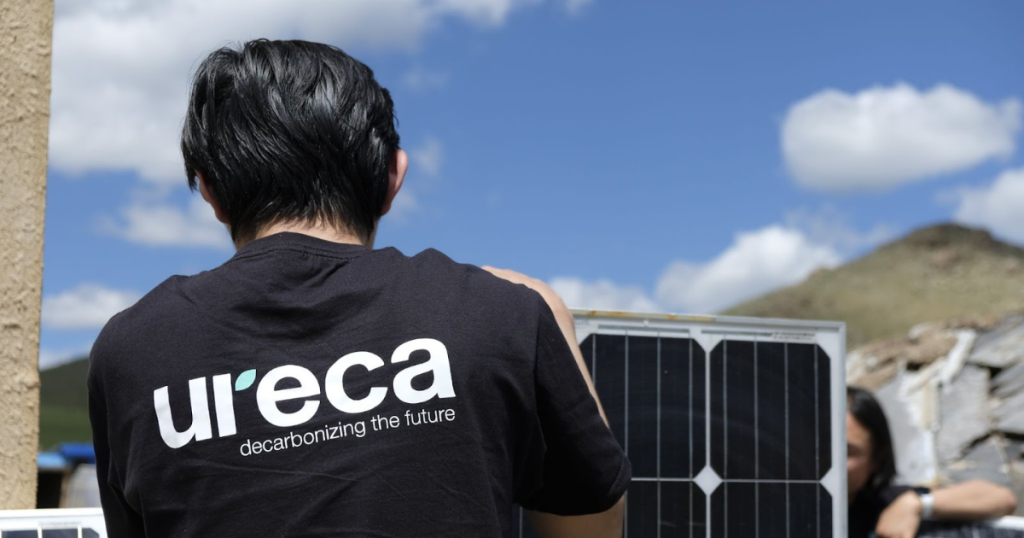
In the coming decade, carbon taxation is set to play a significant role in Singapore’s efforts to control climate change.
As it stands, companies which emit at least 25,000 tonnes of greenhouse gases (GHG) per year are regulated under the Carbon Pricing Act. Introduced in 2019, this requires them to submit an annual emissions report and pay a tax of S$5 per tonne of GHG emissions.
The tax rate will see an exponential increase after 2023. It’ll be set at S$25 per tonne in 2024 and 2025, S$45 in the following two years, and up to S$80 by 2030. This is in line with an aim to make Singapore a net-zero emissions country by 2050.
Increasing the tax rate could have a significant impact on business costs. To help control this, the revised carbon tax framework will include subsidies which promote decarbonisation. Notably, businesses will be able to use international carbon credits to offset up to five per cent of their taxable emissions.
Carbon credits are issued by climate action projects which work to reduce GHG emissions. Each credit is the equivalent of one tonne of emissions being removed from the atmosphere. Companies can purchase carbon credits to effectively counteract the emissions which they produce.
The barriers to carbon credit trading
Traditionally, carbon credit markets have suffered from a number of issues, including a lack of accessibility and transparency. They involve a number of middlemen responsible for verifying credits and facilitating trade.
“The current system in place today for carbon credit verification and trading is often inefficient, fragmented, bureaucratic and costly,” explains Orchlon Enkhtsetseg, founder of Singapore-based climate tech startup URECA.

The process requires upfront verification, certification and annual monitoring which would involve a high-cost barrier and an extensive timeline. There is also a lack of liquidity, which is necessary for efficient trading.
– Orchlon Enkhtsetseg, founder of URECA
This makes participation difficult, not only for businesses purchasing carbon credits but also the ones producing them.
“Small renewable producers often get intimidated by the sheer amount of paperwork, and thus are unable to even begin the process of trying to understand whether they qualify for carbon credits,” says Enkhtsetseg.
Carbon credits on the blockchain
Using blockchain technology, URECA is making the carbon credit market more accessible for all. Processes such as the verification of credits are being automated, allowing trading to be cheaper and more efficient.
Blockchain technology tackles several key deficiencies that were associated with the carbon credit markets. These include improved transparency on where the credits originate from, total chain of custody, decentralised and transparent registries, and ability to scale the markets through the use of smart contracts.
– Orchlon Enkhtsetseg, founder of URECA
With the help of URECA’s proprietary technology, households can generate revenue by installing solar panels and using them to issue carbon credits.
“The renewable energy produced by the solar panels is verified at the source and then validated through URECA’s machine-learning-powered verification and accreditation system.”
The renewable energy produced by these solar panels is automatically recorded in the form of a blockchain-based certificate. “With this certificate, small renewable producers can directly sell their carbon credits on URECA’s decentralised exchange.”

Currently, URECA is rolling out its technology in Mongolia, in an effort to bring pollution under control and promote renewable energy.
“Mongolia has an extremely harsh winter climate and residents stay warm by burning wood and unrefined coal, making Ulaanbaatar one of the most polluted cities in the world,” Enkhtsetseg explains.
By switching to renewable energy, households can stop as much as 20 tonnes of coal from being burnt annually. In addition, they can reap the monetary benefits of selling carbon credits.
Over time, URECA plans to expand across other Asian countries as well. Singapore is a key location for the company to facilitate this effort.
“The Singaporean government has taken a leading stance to mobilise resources and implement policies to fight climate change. That is the reason why we have chosen Singapore as our global headquarters.”
Singapore as a carbon trading hub
AirCarbon and MetaVerse Green Exchange (MVGX) are two other Singapore-based companies which operate their own blockchain-based carbon trading exchanges.
Launched in 2019, AirCarbon Exchange was the first of its kind. Today, it offers global access to a range of carbon credits securitised as tokens. Along with this, the platform has also offset its own emissions using carbon credits, making it the world’s first carbon-negative trading platform.

At the moment, AirCarbon Exchange’s clients are primarily corporation and accredited investors. This could change in the future, thanks to the improved accessibility to the market. “It is likely that more retail investors would be interested in adding carbon credits as a part of their investment portfolio,” says a company representative.
MVGX is also strengthening Singapore’s carbon market through its proprietary tokens, which provide a full view of carbon footprint disclosures to both buyers and sellers.

Already at the forefront of climate action, Singapore is well-positioned to leverage its role as a key trade and finance hub to strengthen its proposition as a carbon trading destination. Blockchain-based innovations such as MVGX’s Carbon Neutrality Tokens can help strengthen Singapore’s carbon market, as the country looks to fulfil its sustainability obligations as part of its Green Plan 2030.
– Dr. Bo Bai, Co-Founder of MVGX
Earlier in July, the Monetary Authority of Singapore’s Managing Director Ravi Menon spoke about Singapore facilitating the growth of the voluntary carbon services ecosystem.
He cited AirCarbon Exchange and MVGX as examples among 70 organisations which currently provide carbon services in the country. This is the highest concentration of service providers anywhere in Southeast Asia.
For years, Singapore has maintained a progressive stance on the development of blockchain technology. Carbon credit exchanges are one of the most promising use-cases — which address a real-world problem — to emerge thus far.
Also Read: A look at S’pore’s carbon-credit scheme for EVs and how it stands out from global efforts
This Cyberjaya academy was established to align drone training with real industry needs
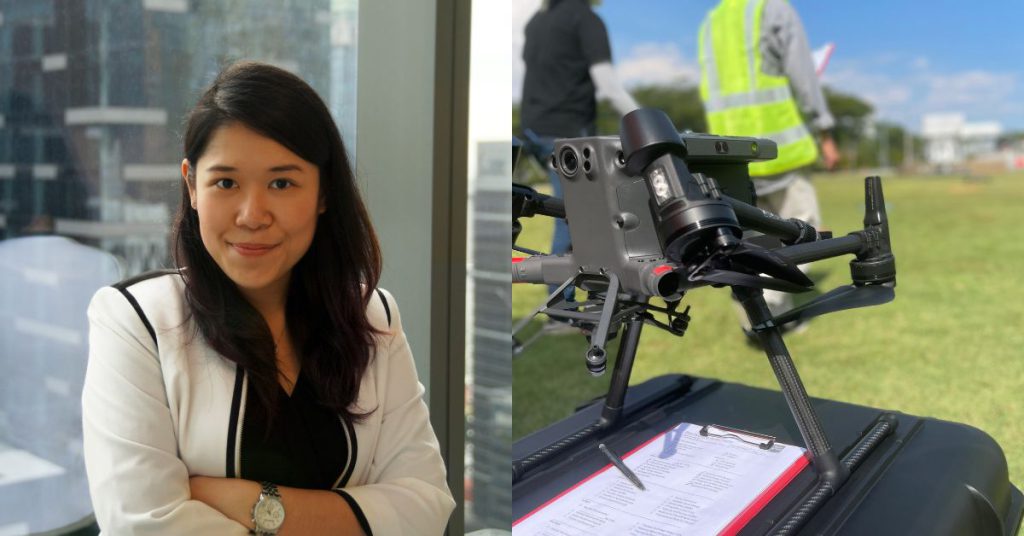
If you’re active on social media, you likely most commonly come across the use of drones in beautiful photography and videography.
Formally, drones are known as unmanned aerial vehicles (UAVs) or unmanned aircraft systems.
Essentially, a drone is a flying robot that can be remotely controlled or using software-controlled flight plans in its embedded systems. This works in conjunction with onboard sensors and a GPS.
Beyond their uses for social media or marketing content, they’re widely used as working partners in various industrial sectors, where they execute routine work functions.
These include agricultural processes, search and rescue, monitoring, and more. Their use cases are growing with each advancement of drone technology, and they’re increasingly used in demanding and dangerous work to prevent potentially fatal work accidents too.
Pioneering the growth of drone applications in industries in Malaysia is Drone Academy Asia (Drone Academy), and here’s what they’ve been doing thus far.
The past
In 2018, commercial usage of drones was gaining steady momentum and more industries started adopting drones to become a part of their regular operations.

However, there wasn’t yet a Malaysian organisation that focused on providing comprehensive and professional drone training for industry usage.
“I personally recalled when we first started, the drone usage in Malaysia was mainly skewed towards the aerial photography and hobbyists,” explained Erin Hoo, Director and Accountable Manager of Drone Academy Asia.
The founders of Drone Academy Asia come from a blended background in Drones Consulting, MarTech, and Business Strategy. Part of the academy’s founding team also includes Poladrone’s (now known as Aonic) CEO and founder, Jin Xi Cheong.
When the team was doing market research in the early days, the most pressing question they received was whether they could upskill workforces in drone applications catered to their industries.
Hence, Drone Academy was launched as a solution to such demands. It was also to establish itself as an organisation dedicated to providing drone training.
“I firmly believe that with all the latest technologies, we need solid training now more than ever. Only with knowledge can we integrate drones in a sustainable manner,” shared Erin.
Despite their experience in dronetech, the team still acknowledges there’s always more to learn, so they often educate and upskill themselves with the help of other experts.

“This includes formal and informal interactions with drone manufacturers and drone service providers and involving themselves in drone operations,” mentioned Erin.
Only this way can they produce competent remote drone pilots who fully understand aviation safety, allowing the industry to grow in a way that doesn’t jeopardise the public’s safety, but instead benefits it.
Drones as a benefit
According to Erin, previously, most of the individuals they spoke to were excited about the technology, but did not know what they wanted to apply it to.
A testament to the industry’s progression, however, they now encounter many individuals and organisations who are clear on their objectives in implementing drones.
On the side of regulators, the Civil Aviation Authority of Malaysia (CAAM) has supported the advancement of integrating drones into the Malaysian airspace. Hence, there is an increase in awareness of safety rules when operating drones.
In line with the CAAM’s objectives, Drone Academy has come up with a solid regulatory framework and a standardised curriculum approved by the CAAM.
This will provide a greater boost of confidence for enterprises and industries to expand their investment in drone technology. In turn, this will increase employment opportunities across industries that utilise drones such as energy, surveying, surveillance, and agriculture.
“This is why as a CAAM-approved Remote Pilot Training Organisation, we have a duty to ensure that our trainees have a deep understanding of the importance of safety in drone operations,” said Erin.
By putting aside their interests, the academy believes drone usage will reduce operating costs and increase productivity in return.
Additionally, the academy also had its representatives invited to speak at various conferences and seminars on drones.
Erin has faith that this will augur well for the future outlook of Malaysia.

The future of drones
In the eyes of the academy, drone training and education will have to align with real industry needs.
“This is why we always stress that our trainees should match their training needs to an outcome they want to achieve with drones,” added Erin.
Currently, the academy does not provide programmes for children as they are choosing to focus on using drones for work purposes.

Moving forward, Drone Academy’s short-term goals include continuing to deliver optimal learning experiences for their trainees in this ever-evolving market.
This includes growing the academy’s team, increasing their internal know-how, and establishing partnerships within the Malaysian market.
In the long term, they are looking at developing more technical and advanced application-specific courses, as this would be in line with industry needs.
- Learn more about Drone Academy here.
- Read other articles we’ve written about Malaysian startups here.
Also Read: Axdif: An HR management platform that solves communication, planning, & productivity issues
Featured Image Credit: Drone Academy
What is ESOP, and how can it benefit a company’s employee retention in M’sia?
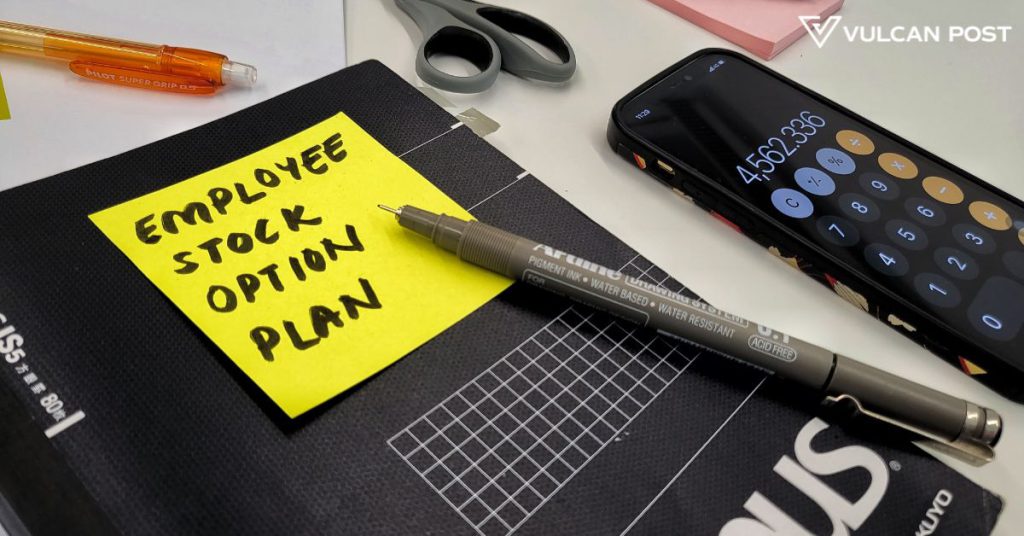
Other than offering employees an attractive compensation package to retain talent, most companies also offer incentives and benefits, which serve to keep up productivity too.
Normally, these incentives can include bonuses, while benefits include medical claims, subsidised parking, and more.
In Malaysia, however, one lesser-known benefit is the Employee Stock Option Plan (ESOP).
What is ESOP?
ESOPs are stock options that are granted to employees in a company. The stock options offered are a form of equity compensation that gives an investor the right, but not the obligation, to buy (exercise) or sell a stock at an agreed-upon price and date.
The price and quantity of the shares are usually predetermined by the company.
Different from your standard exchange-traded options (shares), ESOPs aren’t generally traded on the exchange.
For certain companies, employees would need to wait for a specified time before they can carry out the option.

Funding Societies, a Southeast Asian digital financing platform for SMEs with operations in Malaysia, is one example of a company giving out ESOP to its employees.
According to its spokesperson, Chai Kien Poon (KP), Funding Societies’ ESOP is open to all eligible staff in the markets the company operates in.
They include employees in Malaysia, Singapore, Indonesia, Thailand, Vietnam, India, and even remote teams.
Funding Societies employees’ eligibility to opt-in for ESOP is based on their job levels as well as the type of grant given to the employees.
The grant ranges from 25% to 100% of the annual salary of the eligible employees, which include:
- New hires: Particularly those in critical or hard-to-acquire and hard-to-replace roles;
- Long service employees: Long-serving employees who serve for a minimum of a two-year period;
- Promotions: Employees who demonstrate the ability to assume higher responsibilities and be promoted to a new job level;
- Performance: Employees who deliver consistently high-level performance over a specific period of time;
- Spot bonus: Employees who consistently outperform in performance or project, with tangible financial results, or those who consistently live and demonstrate company core values.
Benefits of ESOP on employees and the company
ESOP works as a tool in attracting and retaining talents. For Funding Societies, KP shared that it helps the company strengthen itself against competitors.
“As ESOP provides employees with a sense of ownership in the company, this enhances their job satisfaction and morale, and subsequently helps us with employee retention,” said KP.
He reported that since implementing ESOP, the company has seen its lowest employee attrition rate and highest employee happiness scores since Funding Societies was founded in 2015.
ESOP can also serve as an incentive to encourage employees to contribute above and beyond their immediate roles and responsibilities.

To facilitate this, Funding Societies’ ESOP grants are also tied to consistent outperformance during each half-yearly review.
“Because ESOP gives employees a share of the company, individual employees will directly benefit from the success of the company contributed by their efforts, and subsequently they will feel a sense of ownership,” KP elaborated.
Compared to an external third-party sale of company shares, ESOPs can take less time to implement. However, it’s worth noting that there are downsides to ESOPs as well.
The hassle of ESOP
In general, the greatest benefits of a stock option are realised if a company’s stock rises above the exercise price (the price per share its owner can buy or sell).
Typically, Employee Stock Options (ESOs) are issued by the company and cannot be sold, unlike standard listed or exchange-traded options.
One hassle of offering ESOP is brought up when an employee leaves the company. Resigning employees can choose to sell their shares back to the company and receive their payouts in the form of dividends.
Doing so would require companies to have strong management to succeed during an ESOP transition. More often than not, the services of lawyers and accountants are also required during this transition process.
Of course, there are more pros and cons of implementing ESOP, and if you’re an employer considering it, it’s worth doing more of your own research or speaking to experts for sound advice.
How big does your company have to be to offer ESOP?
Funding Societies’ KP shared that ESOP options are best incorporated into the benefits structure when a company projects strong growth in the coming years.
For context, the company has 500 employees across the group, with over 120 of its current and former staff having benefited in the form of cash rewards from the share buyback rounds.
“Contributions from the staff are crucial [for ESOP to succeed]. It provides a sense of belonging and ownership knowing that they can enjoy additional benefits from the growth on top of other bonuses and awards,” KP added.
One article by Commerce Bank from the US suggests that ESOPs are not ideal for startups or very small businesses.
“The cash flow dedicated to the ESOP can limit what’s available to reinvest in daily operations, posing a challenge for earlier-stage companies,” it wrote.
“And [as] shares must be repurchased when an employee departs, a small business could face a steep future expense if several team members leave at once.”
In the unfortunate event that the company goes downhill, ESOP can mean nothing to its owners.
How can companies implement it in Malaysia?
If you’re considering creating a compensation/reward plan that includes ESOP, it’s essential to know how they work in Malaysia.
Locally, ESOPs are considered “securities” under the Capital Markets and Services Act 2007 (“CMSA”) Securities Law.
Malaysian labour laws, company laws, securities laws, listing requirements, EPF implications, and tax laws are some of the things that need to be carefully considered when customising an ESOP.
More importantly, Funding Societies shared that companies offering ESOP should ensure that its employees’ values align with the company’s.
“Have a philosophy crafted around your stock option plan factoring in your mission and values in the ESOP design,” KP explained.
This ensures that the stock option jives with an employee’s intrinsic values which would add a layer of attachment to the company.
KP elaborated that when the employee’s and company’s values are aligned, both will mutually move towards the same goals and vision.
- Read other workplace-related articles we’ve written here.
Also Read: Here’s a quick guide on how to get a RM50 voucher by subscribing to foodpanda’s pandapro
Featured Image Credit: Vulcan Post
This Dato’s e-motorbike food “trucks” empower delivery riders in M’sia to be foodpreneurs
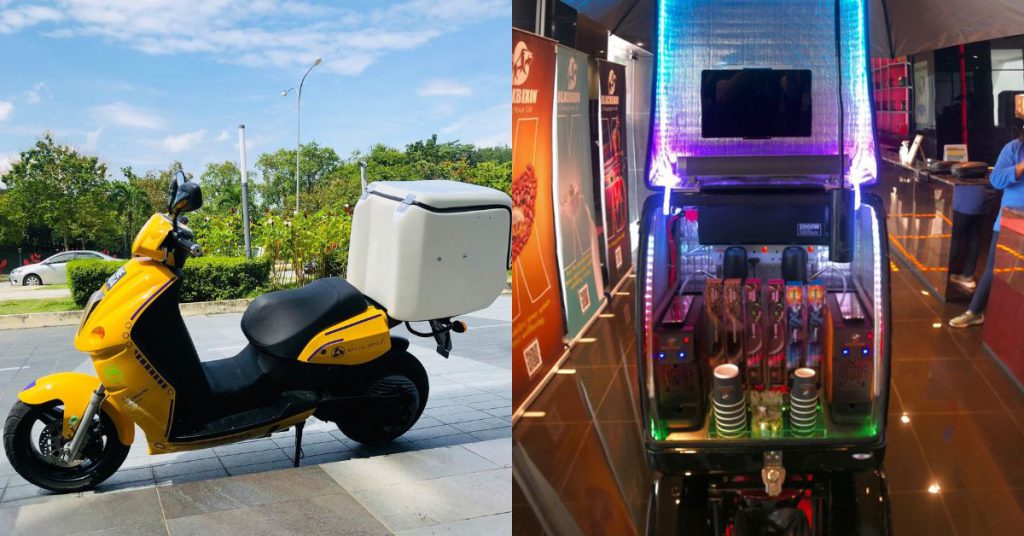
Heading to pasar malams for freshly cooked street food is an ingrained experience for, dare I say, all Malaysians.
From food trucks to old-school tricycles, food sold on wheels is a familiar sight to us. Now, a Penang GreenTech startup, Eclimo is seemingly pairing two essentially Malaysian icons—food and motorcycles—to benefit small-scale foodpreneurs.
Enter: The EclimoES11 (ES11), an e-motorbike food “truck”.
The electric vehicles come equipped with a customised carrier bag which can power a grill or stove placed inside it.
This gives added mobility to foodpreneurs to cook nasi lemak, toss a pizza, or make satay on the go from their carrier bag, which can be rented for RM20 to RM30 per day.
It started with coffee
Eclimo was founded in 2008 in Penang by Dato’ Dennis Chua as a company developing EV battery packs, which are patented and a part of its e-motorbikes.
The idea to launch an e-motorbike food truck started with an idea to create a rescue bike for EVs that had run out of charge in 2021.
“The bike would be designed to go to your stranded EV, give it a fast charge of about 10km or so, enough that you can move your car to the nearest charging station,” said Dato’ Dennis, co-founder and Executive Director of Eclimo.

Around the same time, a client who was operating a mobile capsule coffee drinks business saw this rescue bike and asked if it had enough charge to power up the machines.
“They already had a rough design to run the coffee capsule machine off the back of an internal combustion engine (ICE) bike, powered by a car battery,” recalled Dato’ Dennis.
However, the design made the bike too heavy at the back, and the car battery did not have enough power for them to finish their work.
“So, we started with that. Then, when other customers saw this prototype, more requests poured in, from grilling satay to powering a microwave oven, and freezing ice cream.”
Dato’ Dennis told Vulcan Post that such an idea was always something his team had in mind. But the idea of putting an entire kitchen on the back of a bike never took off as a serious add-on until they discovered that banks were willing to fund these micro-mobility entrepreneurs.

“Bear in mind that at the time, financing and grants were only for food truck businesses, not for two-wheelers,” he noted.
Unsurprisingly, COVID-19 also had a part to play in this, as entrepreneurs were afraid to take up retail outlets and were looking for something more flexible amidst the uncertainties at the time.
“We realised that if we could develop a two-wheeled solution for Malaysia’s fast-growing group of micro-mobility entrepreneurs, and it could help them to generate more income, then that’s where the demand would be,” Dato’ Dennis decided.
As these requests were coming from Eclimo’s customers, it was a market-driven idea from the start. Dato’ Dennis reported that the take-up for the ES11 has been organic growth as the market saw the solution provided and continued going to the company for more applications.
Turning delivery riders into foodpreneurs
When asked about how Eclimo intends to reach its target market of B40 foodpreneurs to capitalise on the ES11, Dato’ Dennis’s plan is to collaborate with F&B brands looking to expand.
Directly reaching out to Satay Jaybee, Boncafe, and Huckleberry, the deal is to target riders of a certain age and work with the F&B brands to help riders to grow their own food business.

“There are at least 170,000 e-hailing riders nationwide but not all of them would want to be riders for life,” Dato’ Dennis explained.
He elaborated that this is because income for riders is fixed, and the only way they can earn more money is to put in more hours, which won’t be viable in the longer term.
“It’s a targeted approach, so that we can match this outreach with our growth potential,” Dato’ Dennis expressed.
All-inclusive package
Cost-wise, the basic ES11 bikes are available for lease from RM600 per month, which is broken down to an approximate RM20 to RM30 per day.
The accessories, which include the carrier bag with various cooking appliances inside, can be customised to each user’s needs.
“These are purchased outright, and vary in cost from RM500 to RM5,000 depending on what appliances they require,” added Dato’ Dennis.
Say a foodpreneur plans to own an ES11 themselves, Dato’ Dennis shared that the average price for an outright purchase is RM24,500. This is inclusive of the extended power for the appliances, and two years’ maintenance.
“With financing, the feedback we get is that this is affordable, especially when compared to the cost of getting a food truck of around RM80,000 to RM200,000,” he weighed out.
In terms of Eclimo’s short-term product development plans, the team will continue their efforts in improving the batteries and engines for the ES11.
Dato’ Dennis also intends to keep Eclimo’s manufacturing and HQ in Penang, having been born and raised there.
For now, Eclimo has expanded to the Klang Valley where it operates a service and plate management centre.
Beyond that, the team reported that next year, they plan to expand their fleet of customised e- motorbikes for food vendors in the Asean region.
Also Read: Here’s a quick guide on how to get a RM50 voucher by subscribing to foodpanda’s pandapro
Featured image Credit: Eclimo

